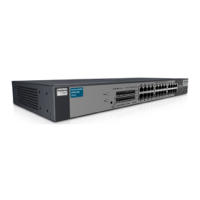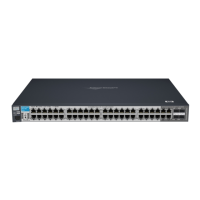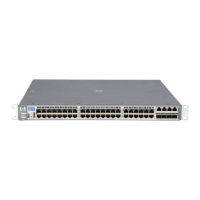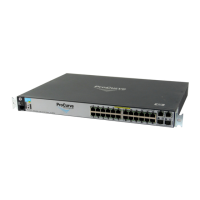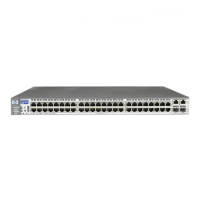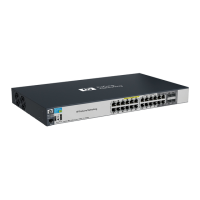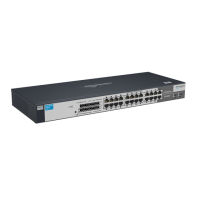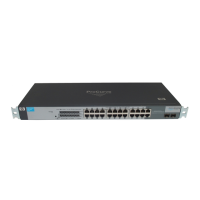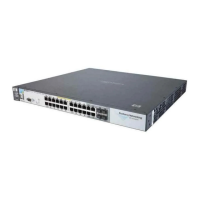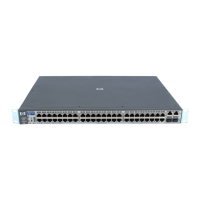6-23
Quality of Service (QoS): Managing Bandwidth More Effectively
Using QoS Types To Configure QoS for Outbound Traffic
2. Overwrites (re-marks) the packet’s DSCP with the DSCP configured in the
switch for such packets.
3. Assigns the 802.1p priority configured in the switch for the new DSCP.
(Refer to “Differentiated Services Codepoint (DSCP) Mapping” on page
6-58.)
4. Forwards the packet through the appropriate outbound port queue.
Note on
Combining
Policy Types
“Mixing” ToS DSCP policies and 802.1p priorities is not recommended. Refer
to the Note on page 6-10.
For more on DSCP, refer to “Terminology” on page 6-6.
Steps for Creating a DSCP Policy Based on TCP/UDP Port Number
Ty p e s . This procedure creates a DSCP policy for IPv4 packets carrying the
selected UDP or TCP port-number type.
1. Identify the TCP or UDP port-number type you want to use for assigning
a DSCP policy.
2. Determine the DSCP policy for packets carrying the selected TCP or UDP
port number.
a. Determine the DSCP you want to assign to the selected packets. (This
codepoint will be used to overwrite (re-mark) the DSCP carried in
packets received from upstream devices.)
b. Determine the 802.1p priority you want to assign to the DSCP.
3. Configure the DSCP policy by using qos dscp-map to configure the priority
to the codepoint you selected in step 2a. (For details, refer to the example
later in this section, and to “Differentiated Services Codepoint (DSCP)
Mapping” on page 6-58.)
Note A codepoint must have an 802.1p priority assignment (0 - 7) before you can
configure a policy for prioritizing packets by TCP or UDP port numbers. If a
codepoint you want to use shows No-override in the Priority column of the
DSCP map (show qos dscp-map), then you must assign a 0 - 7 priority before
proceeding.
4. Configure the switch to assign the DSCP policy to packets with the
specified TCP or UDP port number.
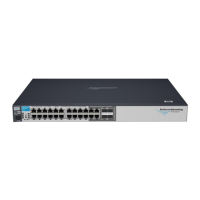
